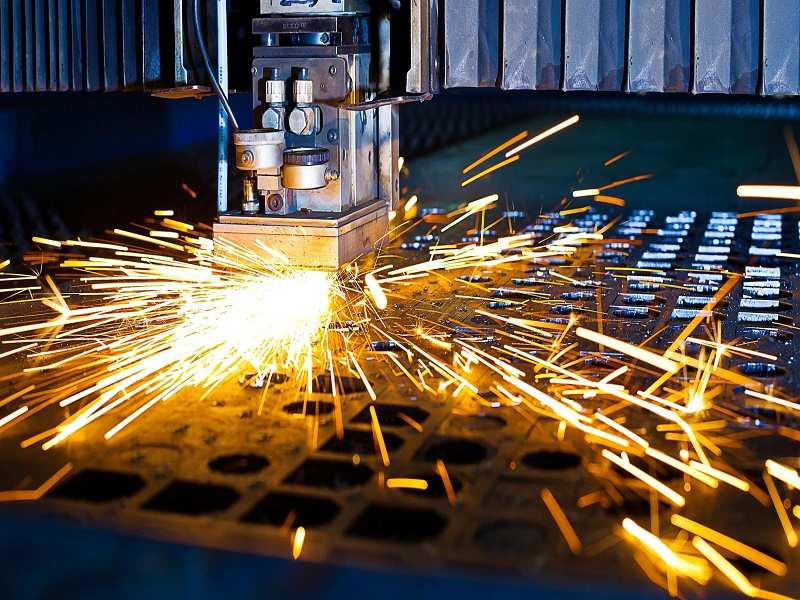
Formerly a labor intensive industry, the global
Advanced manufacturing economies in Europe are already implementing features such as self-driving logistics vehicles like the $4 to navigate autonomously within warehouses, picking up cartons and containers and transporting them to specific locations. In Germany, a logistics company uses augmented-reality glasses to see the $4 and to automatically scan bar codes. The glasses also allow employees to view the dispatch information of the item. And in our own Seagate factories, robots are building our disk drives and extremely sophisticated vision systems support our manufacturing processes.
These are significant advancements for the
Government-led initiatives such as ‘Made in China 2025’ and ‘Make in India’ are driving spend in modern warehouses, improved logistics services and software to integrate the manufacturing and supply chain ecosystem. Industry 4.0 is set to $4 by bringing operational efficiencies to both traditional manufacturing industries – automotive, electrical and electronics – and high-value product manufacturing such as printed electronics and miniaturization.
These changes herald the arrival of the massive data flows that will be created and the unique IT challenges that this information transfer will bring into the manufacturing environment.
Addressing unique challenges in an evolving landscape
Unlike traditional corporate IT infrastructures, manufacturers require a different sort of IT framework. Their IT environments have to support design teams that are geographically dispersed as well as external suppliers that play a vital role in component and product development. This requires a collaborative system that is accessible without compromising privacy and security.
In addition, manufacturers need a system that is rapidly scalable to make use of the data pouring in from various channels: sensors in their factories, inventories, raw materials and other segments along the supply chain. With increased machine-to-machine communication and robotics entering the manufacturing process, the volume of data being generated, analyzed and accessed by manufacturers and their partners is set to grow significantly. By 2020, the cumulative digital universe of data is set to grow tenfold to $4, from 4.4 zettabytes in 2015.
The solution to these new challenges is cloud computing. Cloud computing is multifunctional and provides immense computing power, storage and analytical tools in a scalable environment. The benefits not only include more efficient operations but also improved customization. Customer expectations for product design, quality and availability are high and with an increasingly fad-driven culture, product life cycles are also shortening. Brands that can customize products and bring them to market quickly stand to gain better profit margins. Consequently, on the operational front, real-time access to transmitted component or product status information allows manufacturers to improve on product quality issues or defects quickly and effectively.
A strategic pursuit of productivity and business agility
At the heart of cloud computing architectures are universal building blocks of IT, such as networking, processing, and storage technologies, all of which are required to optimize performance and leverage the growth in capacity. Cloud environments typically exploit different storage technology tiers to meet different service level objectives (SLOs) and services level agreements (SLAs). A key benefit of using cloud computing services is the removed hassle of having to decide what type of physical storage drives to buy. Cloud computing service providers cater for this by providing various availabilities, costs, capacities, functionalities, and performance options that meet different SLA and SLO requirements.
According to IDC, adoption of the public cloud is $4. The main reason for this is that public clouds allow remote manufacturing facilities to leverage modern IT and communications systems without having a large team onsite. However, this view may change in the future as the manufacturing sector in the region continues to adapt to the Industry 4.0 transformation. Sensitive data, services, and applications are best stored and implemented on a private cloud. By contrast, services available to customers and partners across the supply chain are best served by the public cloud. In the long term, manufacturers are likely to deploy hybrid clouds that effectively marry community cloud services while protecting their intellectual property.
The onward march towards Industry 4.0 in Asia is a time for manufacturing companies to reevaluate their IT strategies for the future. Done right, manufacturers have an opportunity to embrace new technological platforms and applications to move beyond mass production and open up entirely new business models.
This article was written by B.S. Teh, senior vice-president for Global Sales,
